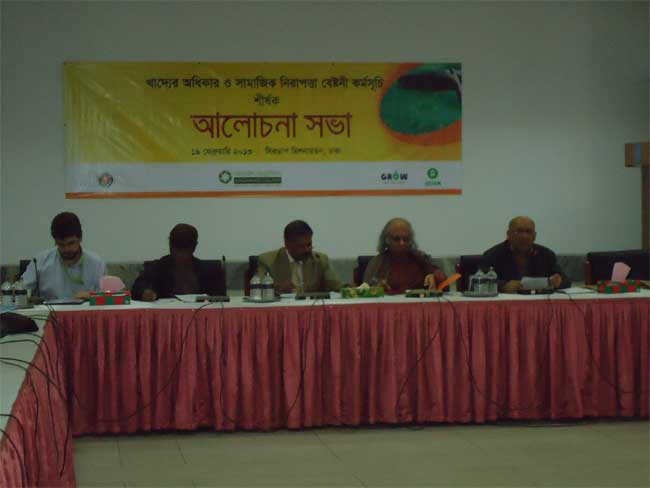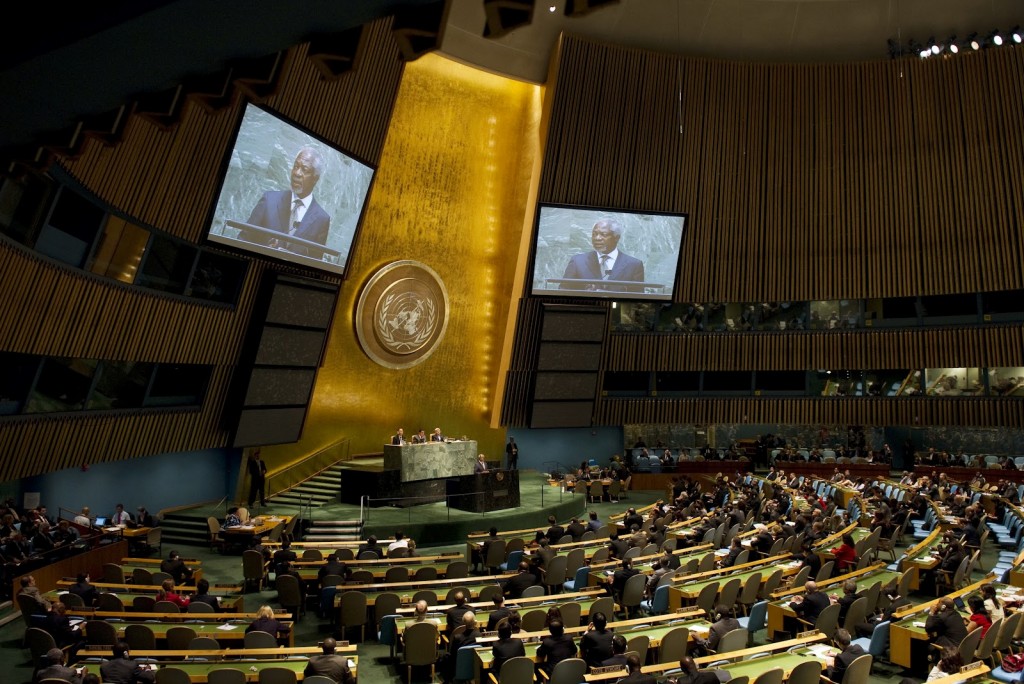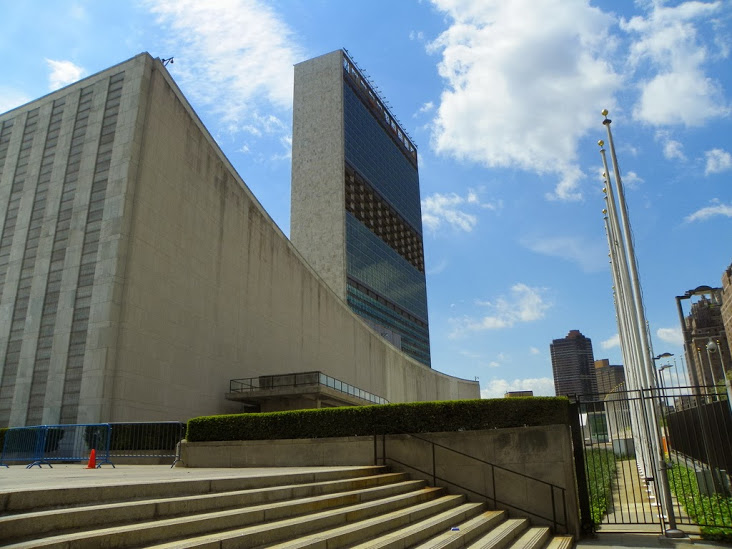The author reviews the High Level Panel Report on the Post 2015 development agenda and highlights its main strengths and weaknesses. From his point of view, the ‘Report provides a major building block, particularly in proposing the five transformative shifts, an overall sustainability framework, and a set of relevant Goals and targets for sustainable development in post-2015 period.
But, there remain critical gaps, particularly from the point of view of developing countries, specially the LDCs’, which need to receive adequate emphasis in the final agenda, if a people-centred, equitable, and inclusive sustainable development agenda has to be met nationally and globally. Read below a excerpt of the paper.
Download full version: www.sidint.net/docs/Ahmad_final_HLP_review.pdf
The Key Issues Ignored or Inadequately Reflected in the Goals and Targets Proposed
Let me now turn to the key issues which the HLP Report has failed to include in goals and targets addressed, either totally or in a proper manner.
POVERTY
Poverty is multidimensional, and it has been so recognized in the HLP Report. Hence, a meaningful poverty eradication strategy must address the multiple deprivations, which include not only economic, social, and environmental constraints but also structural constraints such as discrimination, violence, and conflicts. Although some of these issues are included in other Goals, poverty measurement has been proposed to be made mainly with reference to income, and a poverty line income of $1.25 (PPP) per person per day has been suggested.
The national poverty line has also been included as an additional yardstick. But, that is often based on the cost of basic needs, which is also a narrow concept in view of the wide-scale multidimensionality of poverty. Having recognized the multidimensionality of poverty, the Report has failed to take it into account in proposing the methods of poverty measurement.
It may be noted here that one way of measuring multidimensional poverty is to specify a poverty line for each key dimension and a person may be defined to be poor if he/she is poor with reference to any one of those dimensions. But, there are methodologies available for combining the dimensions and associated one-dimensional gaps into a multidimensional poverty measure.
HUNGER
Hunger is in fact higher now at around 925 million compared to around 780 million in the mid-1990s, for various reasons including conflicts and climate change impacts. Understandably, hunger is pervasive among the disadvantaged groups. In this backdrop, more prominence should be given to ending hunger by including it in Goal 5, although ending hunger and protecting the rights of everyone to have access to sufficient, affordable and nutritious food is a target under this Goal.
INEQUALITY
Inequality has been recognized as an overarching problem but it has not been frontally attacked, either as a Goal or part of a Goal or even as a target under any Goal. The inclusion of equitable growth in Goal 8 is a step in the right direction, which if implemented properly may improve the prospects of those at the wrong end of inequality. But, no redistribution through, for example, progressive taxation and social protection via transfer payments and other means has been proposed as a target.
Also, the emphasis of the HLP on inequality seems to be posited with reference to nation states. Regarding global inequality, it has been suggested that ‘Low and middle-income countries are now growing faster than high income ones, which helps to reduce global inequality’ (p. 4). The burden is placed on the low and middle-income countries, and nothing has been specifically asked of the developed countries to do to reduce global inequality.
Tackling inequality, nationally and internationally, is very important for sustainable development so that it must not be ignored in goal and target setting. It may be incorporated in Goal 8 with appropriately designed targets.
INTERNATIONAL GOVERNANCE AND FINANCIAL INFRASTRUCTURE
Under Goal 12, a target has been included relating to the implementation of reforms towards ensuring stability of the global financial system. But, what reforms? International governance in terms of management and functioning and decision-making processes of international institutions, including UN, particularly the Bretton Woods Institutions, is highly iniquitous, because of contribution-based voting rights or the clout of the global power structure. This issue has been basically ignored. In order to promote an equitable global system, it is essential that both global governance and global financial architecture are so reformed as to allow the currently voiceless countries and populations to have their perspectives and voices reflected in the international governance and in the management and operations of international financial architecture.
JOB CREATION
Job creation as part of Goal 8 and the focus on young people in a target under it recognize important aspects of sustainable development. While it is to be recognized that market create jobs, there is a problem in the present ruling paradigm of neo-liberalism that promotes the interests of the empowered while further disempowers the powerless. Therefore, in order to create jobs for the disadvantaged groups, indeed for people at large, it is essential to introduce market reforms and reorientation of economic policies towards a participatory framework to enable the ordinary people, particularly the disadvantaged segments of the population, to participate meaningfully in the market, be it in the realm of production or of distribution or of providing various services. There is nothing said, either in the Report or in the Goals and targets, relating to promoting such an enabling environment for an equitable and participatory economic system.
1genericpills.net buy Clomid buy Clomid online Clomid online buy Fertomid Fertomid online buy Clomiphene buy Fertomid online Clomiphene online buy Clomiphene online cheap Clomid buy Clomid uk Clomid without prescription buy Fertomid uk buy cheap Clomid buy Clomid online uk cheap Fertomid cheap Clomid online
INTERNATIONAL MOVEMENT OF PEOPLE
The HLP Report recognizes that international movement of people along with goods and services would enable more people and more countries to benefit fully from globalization (p. 54). But, neither in the Goals nor in any of the targets international movement of people has been included.
International migration of workers is indeed an important contributor to growth in both sending and receiving countries. To facilitate worker migration from the sending countries so that the migrating workers are not exploited by unscrupulous recruiting agencies and other middle-people and to ensure their labour and human rights in the receiving countries are very important.
At the same time, the number of climate change induced displaced people in the highly climate-vulnerable countries is sharply increasing. The Cancun Agreement (CoP 16) recognizes this and states that such displaced people should be rehabilitated within their countries, regionally, and internationally. This is something that needs to be given emphasis in any process of sustainable development.
One would, therefore, find it essential that migration of all types would find a place in a post2015 agenda. I strongly suggest that it be incorporated in the agenda, perhaps in HLP proposed Goal 12 as a major target.
CLIMATE CHANGE
It has been recognized in the Report that poverty and climate change are intricately related. Indeed, increasing climate change impacts widen and deepen poverty. But, despite recognizing the intensifying threat from climate change, this issue has not been frontally addressed. It remains neglected in the HLP proposals, just as it was in the MDG agenda. However, aspects of it have been introduced in the HLP Report as targets under different goals such as the vision of keeping global average temperature below 2oC by the end of this century compared to the pre-industrial level under Goal 12 and aspects of clean energy promotion under Goal 7. But, there is no mention of adaptation to the climate change impacts already faced by many countries, particularly the highly climate vulnerable countries. Financing, technology transfer, and capacity enhancement support from international community to the vulnerable countries are crucially important in this context. At the same time, of course, drastic reduction of GHG emissions commensurate with below 2oC global warming is the other crucial aspect of climate change management. It is also the case that environmental degradation is accelerating in many countries around the world.
In the context of climate change management, disaster risk reduction (DRR) is a particularly important issue. An effective DRR programme can help reduce adverse impacts of natural disasters which are increasing in both frequency and devastation as climate change intensifies. Hence, DRR should be given due emphasis in the Post-2015 Agenda.
In order to give due emphasis to the urgency of environment and climate change management, a separate Goal should be introduced with such wording as: Environmental Protection and Climate Change Management. Targets relating to environment and climate change included under other Goals and other pertinent targets such as DRR can make up the targets under this Goal. Of course, appropriate indicators under the chosen targets will need to be formulated.
URBANIZATION
One other emerging major issue is rapid urbanization largely due to rural-urban migration. Urbanization offers both opportunities and challenges. Unless the challenges in relation to urban services and infrastructure can be addressed effectively in the face of rapid and unplanned urbanization, any opportunities arising is likely to remain unrealized and urban centres are eventually likely to become, by and large, unlivable and a drag on national socio-economic progress instead of remaining or becoming stronger derivers thereof.
This issue has not been taken on board by the HLP. But, it is important enough to find a place at least in terms of a properly defined target, perhaps under Goal 9 which has to do with sustainable management of natural resource assets.
GOAL 12
Goal 12 and the targets under it remain rather porous. However, it has been pointed out in the Report itself that more work is needed to further clarify the issues and concretize the proposals under this Goal. This is a crucial task and must be treated as such and addressed purposefully by all concerned. In this context, the following comments may be pertinent.
On the financing of post-2015 agenda, most of it, as the HLP suggests, is to come from domestic sources (p. 12). Regarding international financing, a target under Goal 12 states that developed countries should make concrete efforts to fulfill their long-standing commitment of providing 0.7% of their respective GDPs as official development assistance (ODA) to developing countries and 0.15 to 0.20% of their GDPs to the least developed countries (LDCs). But, in respect of further long-term international financing, the most important source, as suggested by the HLP, is the private sector which consists of various funding mechanisms (p.12). These private sources are sure to be too difficult for the LDCs, small island developing states (SIDS) and lower-middle income countries to access. The whole issue of financing needs to be carefully thought through and discussed by all concerned along with other components (such as technology and capacity enhancement support) of means of implementation. It is important that means of implementation issues are outlined in relation to the responsibility of both developed and developing countries in concrete terms so that performance of the Parties can be monitored in a meaningful manner.
Qazi Kholiquzzaman Ahmad (Dr.) is Chief Coordinator of Bangladesh Climate Change Negotiating Team, UNFCCC. An economist, he is a former Vice President of SID
Source: Society for International Development, http://www.sidint.net/content/review-report-high-level-panel-post-2015-development-agenda
Photo: Simon English/flickr, http://www.sidint.net/sites/www.sidint.net/files/styles/main_image/public/by_simon_english.jpg?itok=GXwpwBb6




